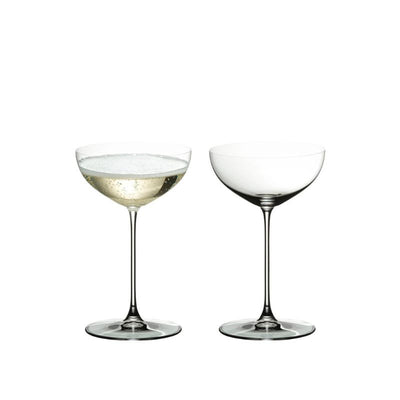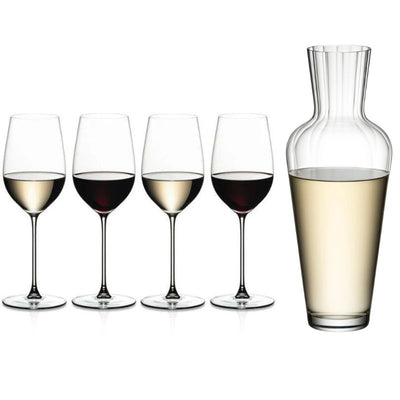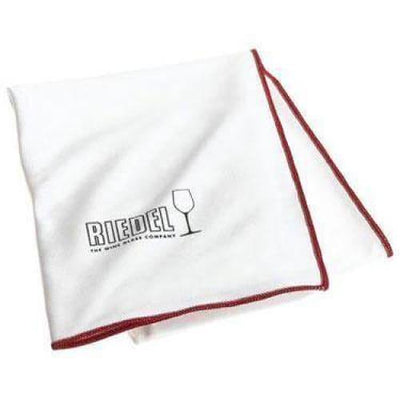Shiraz: The Grape That Conquered the World.

Next Thursday is International Shiraz Day, which gives me the perfect excuse to talk about one of the wine world's most successful global citizens. I say "excuse" because I've been meaning to write about Shiraz for ages, but there's something about this grape that makes it easy to take for granted.
Maybe it's because Shiraz is everywhere. Walk into any wine shop from London to Sydney to New York, and you'll find bottles of Shiraz at every price point. It's the reliable friend of the wine world - always there when you need it, rarely disappointing, but perhaps not the first grape you think of when you want to impress someone.
That's doing Shiraz a disservice. This is a grape that can produce everything from easy-drinking everyday wines to some of the world's most profound and age-worthy bottles. The problem is that its very versatility and ubiquity have made us forget just how remarkable it can be.
A Personal Perspective
I'll admit, I went through a phase of not drinking Shiraz; blame an Argentinian steakhouse, in Gibraltar, a tiny wine glass (better suited to Port), an overcooked sirloin with cold vegetables, and a rude waiter. The memory was triggered every time I even looked at a bottle.
That changed when I tasted a 20-year-old Barossa Shiraz that had been properly cellared, and served in a glass bigger than some flats I’ve lived in.
The wine had developed extraordinary complexity while retaining its essential fruit character. It was a reminder that great Shiraz has the potential for genuine greatness.
As someone trying to explore the wine world's more obscure corners, since then I've made a point of seeking out Shiraz from different regions and producers. The diversity is remarkable - from elegant French Syrah’s that need food to make them sing, to rich Australian monsters that work beautifully on their own, to spicy South African versions that seem to capture something distinctly African in the glass.
The Great Identity Crisis
Let's start with the name confusion that has plagued this grape for decades. Shiraz and Syrah are the same grape - genetically identical - but the names tell you something important about style and origin.
Syrah is what the French call it, particularly in the Northern Rhône where it makes wines like Hermitage and Côte-Rôtie. These tend to be more structured, mineral-driven wines with what wine writers like to call "savoury" characteristics.
Shiraz is the name that stuck in Australia, and it's become associated with a more fruit-forward, approachable style. Though as we'll see, that's a massive oversimplification.
The grape is the same, but the expressions can be worlds apart. It's like the difference between calling someone "Michael" in a formal setting versus "Mick" at the pub - same person, different contexts.
The Australian Revolution
Australian Shiraz deserves credit for democratising serious red wine. Before the Australian wave, good red wine often meant expensive French bottles that needed years to become drinkable. Australian producers showed that you could make wines of genuine quality that were delicious from day one.
The Barossa Valley became the spiritual home of Australian Shiraz, with some vineyards containing vines planted in the 1840s. These old vines produce wines of remarkable concentration and character - proof that Australia isn't just about immediate gratification but can produce wines with real depth and aging potential.
McLaren Vale, Clare Valley, and the Eden Valley each developed their own distinct styles, showing that Australian Shiraz could be as diverse as any French appellation. The heat and sunshine that characterise much of Australia's wine country create naturally ripe, fruit-forward wines, but the best producers have learned to balance that richness with structure and elegance.
French Finesse: The Northern Rhône
Meanwhile, back in France, Syrah continued to make some of the world's best wines. Hermitage, perhaps the greatest expression of the grape, produces wines that can age for decades and develop extraordinary complexity.
These French Syrahs tend to be more restrained in their youth, with mineral notes, pepper, and sometimes what can only be described as "meatiness" - flavours that complement rather than dominate food. They're wines that reward patience and contemplation.
Côte-Rôtie, where Syrah is traditionally blended with a small amount of Viognier, creates wines of remarkable elegance and perfume. The white grape adds a floral lift that transforms what could be a heavy red into something almost delicate.
The New World Expansion
Success breeds imitation, and soon Shiraz was being planted everywhere warm enough to ripen it properly. South Africa's Stellenbosch region produces excellent examples, often with a distinctive smoky character. Chilean Shiraz from the Colchagua Valley combines Australian-style fruit with French-style structure.
California jumped on the Syrah bandwagon in the 1990’s, particularly in Paso Robles and the Santa Ynez Valley. American producers often lean toward the French name and style, creating wines that bridge the gap between Old and New World approaches.
Even unexpected regions have found success with Shiraz. Parts of Argentina, particularly in cooler, high-altitude sites, are producing wines that would surprise anyone who thinks of Shiraz as a hot-climate grape only.
Food Pairing: The Ultimate Crowd-Pleaser
One of Shiraz's greatest strengths is its versatility with food. This is a grape that plays well with others, complementing rather than competing with what's on the plate.
The classic pairing is with barbecued or grilled meats. There's something about the smoky, charred flavours that works beautifully with Shiraz's natural fruitiness and spice. A good Australian Shiraz with a properly cooked steak is one of life's great simple pleasures.
But Shiraz goes well beyond being a steakhouse wine. Its natural spiciness makes it excellent with Indian cuisine, particularly dishes with warming spices rather than fierce heat. I've had wonderful meals pairing Shiraz with lamb biryani or tandoori chicken.
The wine's fruit-forward nature also makes it surprisingly good with tomato-based dishes. Try it with a rich pasta sauce or even pizza - the acidity in tomatoes brings out different characteristics in the wine.
For something more adventurous, try Shiraz with dark chocolate desserts. The wine's natural richness and sometimes jammy character can complement chocolate beautifully, creating one of those unexpected pairings that just works.
Regional Styles Worth Exploring
-
Barossa Valley Shiraz: Rich, powerful, often with vanilla oak influence. These are wines that announce themselves from the first sip.
-
Eden Valley Shiraz: More elegant than Barossa, with better acid balance and often more complexity.
-
McLaren Vale Shiraz: Chocolate and berry flavours with distinctive Australian character.
-
Northern Rhône Syrah: Mineral, peppery, built for aging. These are wines for contemplation.
-
Languedoc Syrah: French but more approachable than Northern Rhône, often excellent value.
-
South African Shiraz: Smoky, earthy, with distinctive regional character.
The Glassware Question
Shiraz benefits from a glass with a generous bowl that allows the wine to breathe and concentrates those lovely aromatics. A big glass like the Riedel Veloce Syrah glass was made for this grape. (Literally).
The larger bowl helps moderate the wine's natural richness while concentrating the complex aromatics that make good Shiraz so appealing. It's particularly important with fuller-bodied Australian styles that can seem overwhelming in smaller glasses.
What to Look For
When choosing Shiraz, consider what you're planning to do with it. For everyday drinking, look for wines from established Australian regions - they offer consistent quality and immediate appeal.
If you want something more serious, seek out single-vineyard wines from top producers, or explore Northern Rhône Syrahs if you're prepared to invest a bit more time (and money!)
Don't overlook the value in lesser-known regions. Some of the best Shiraz bargains come from areas like Languedoc in France or newer regions in Australia that haven't yet developed premium pricing.
The Versatility Factor
What makes Shiraz special is its ability to adapt to different climates and winemaking styles while maintaining its essential character. Whether it's a £10 Australian Shiraz that's perfect for a Tuesday night dinner or a £50 Hermitage that needs a decade to reach its peak, the grape delivers consistently.
This versatility extends to when and how you drink it. Shiraz can be a casual wine for barbecues and pizza nights, or a serious wine for special occasions and contemplative evenings. Few grapes manage to be both approachable and intense with such consistency.
Thursday's Celebration
International Shiraz Day gives us the perfect excuse to revisit this grape with fresh eyes. Instead of reaching for the usual suspects, try something from a region you haven't explored, or compare a French Syrah with an Australian Shiraz side by side.
The grape that conquered the world did so for good reasons - it's versatile, food-friendly, and capable of producing wines of genuine quality at every price point. In a wine world that often seems obsessed with the rare and exotic, there's something refreshing about a grape that just delivers, consistently and reliably.
Sometimes the best wines aren't the most exclusive ones - they're the ones that enhance your life regularly, week after week, year after year. Shiraz has been doing exactly that for millions of wine drinkers worldwide.
And perhaps that's the greatest compliment you can give any wine: it's so good, we've stopped noticing just how good it is.
So, this Thursday, will your decision be "Australian fruit bomb" or "French contemplation wine?"
Or do what I do.
Buy both - call it "research" and claim it as a business expense.
























Leave a comment